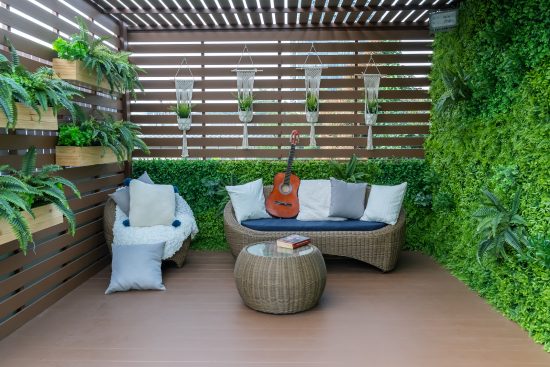
If you are looking for a new look for your garden, you should think about installing new Garden paving . It can be used to redesign your existing driveway, re-lay your patio, or even add a path. Whatever you choose, be sure to coordinate the design with the existing landscape design. Paving can be used to improve the look of your garden, as well as create a more comfortable and stylish space.
Permeable paving
Permeable garden paving can improve water retention and reduce the risk of flooding. The materials are made of porous stones that prevent water from running off and pooling. Instead, water filters through the gravel, acting as a natural filter and cleaning pollutants. Permeable paving also reduces pressure on overloaded and ageing drainage systems. Permeable paving is designed to handle rainwater slowly and safely, preventing damage to surrounding plants and property.
Permeable paving can be made of a variety of materials. The least expensive permeable paving material is crushed stone, which can be laid loosely on level soil. This type of paving is suitable for driveways and walkways. Crushed stone can also be spaced apart from each other, allowing planting and gravel between each stone. Other permeable paving options include plastic mats with cells that allow for plant growth between the stone.
Another type of permeable paving is grass pavers, which resemble the look and feel of a lawn. The open cells between the grass pavers are filled with dirt, and the grass seed is planted within them. This permeable paving is particularly useful for driveways, as the pavers are strong enough to support heavy loads.
Permeable garden paving is increasingly popular in the mid-Atlantic, where local governments are concerned with stormwater management best practices. After the 2017 Hurricane Harvey, which resulted in severe flooding, permeable pavers were used to control the water that would otherwise flow off the surface.
Brick paving
Brick is a classic building material that can add a rustic look to your garden. Its durability comes from the process of firing, where clay or shale is heated to make it solid. Brick paving requires little maintenance and can last for decades. Bricks can be laid in a variety of patterns.
Bricks can be laid flat, in a checkerboard pattern, or in a basket weave pattern. They are typically 2 1/2 to four inches thick, and they make for a good walking surface. Bricks made from kiln-fired clay are generally harder than concrete and will last longer.
Brick paving is a relatively low maintenance material for garden paving. They don’t fade or need special upkeep. Broken bricks can be replaced individually. Bricks can also be reclaimed and used for a new project. Bricks are great for high-traffic areas because they can withstand heavy loads.
The herringbone pattern is the most common block paving pattern. It has the highest bond strength, making it ideal for driveways and roads. Bricks can be made from concrete or clay, and are available in a variety of colors. Bricks can be laid with small gaps between them, allowing water to drain. Basketweave is another popular pattern, but is better for low traffic areas.
Chicago brick paving is a cost-effective way to add a traditional feel to your garden. Its durable design is one that will last for many years. Bricks are rectangular blocks of baked clay. Bricks can be laid with small gaps between them or in a pattern of your choice. These are also environmentally friendly due to their natural materials and low maintenance.
Concrete paving
If you are looking for an attractive and durable paving surface for your garden, concrete paving is an excellent option. It can be laid below damp-proof courses or air bricks. It should also slope away from the house so that excess water is carried away. If you are thinking about paving your garden with stone, you must make sure that the stone you choose has the required ETI approval, and is certified by the quarry.
Another reason why Concrete paving stones is a good option for your garden is its low maintenance. You can even stain concrete to enhance its natural beauty, making it both functional and stylish. You can also stencil it to create a unique design. In addition, concrete comes in a variety of textures, making it suitable for many home designs.
It is a versatile material, which can be used both for residential and commercial purposes. It has an inviting texture and warm hues that are suitable for either a country cottage or a grand estate. It is easy to design and install. However, it is one of the more expensive paving materials.
Concrete is also an excellent choice for a backyard pool. It can soak up moisture and drain just as effectively as any other outdoor surface. Furthermore, concrete can be used to create open spaces with lots of natural sunlight.
Porcelain paving
When it comes to installing Porcelain paving in your garden, there are some steps you’ll need to take. First, make sure you use the proper equipment. A diamond blade is essential when cutting this type of paving tile, and a wet saw is best for larger projects. You’ll also want to ensure that you use a drill bit that is specially made for hard materials.
Another thing you’ll need to consider is the colour of the porcelain you’ll use. Grey porcelain is a popular choice as it comes in several different undertones and complements many garden accessories. When choosing the colour, consider the colour of the house, the grout, and any windows in the garden. If you have red brickwork, for example, a blue undertone might work well. However, if your brickwork is pale, a warmer undertone might be better.
Porcelain paving is also highly durable. It has a high resistance to UV rays and is less susceptible to staining than other types of paving. Porcelain is also resistant to scratches and mildew. In addition, its surface is slightly textured and therefore is safe for bare feet.
Porcelain paving is also scratch resistant and can withstand high traffic. However, you should always take care to avoid moving heavy furniture on it to avoid damaging it. It also does not fade thanks to the UV resistant inks used in printing. This means that slabs laid today will still look good in 50 years.
Carpet stones
While paving slabs are a quicker and more convenient option for garden paving, carpet stones require more preparation and installation. Unlike paving slabs, you must lay a sub-base and a laying bed first before you lay Carpet stone . Without a solid foundation, carpet stones can shift and move. Also, they are more expensive than paving slabs, so you should take into account this before you make your decision.
Whether you’re paving a walkway or a garden area, using carpet stones can give your outdoor area a stylish finish. Just be sure to install the stones at a depth of 22.3 cm (8.8 inches). For an even finish, you can add a border or a path of different styles and colours.
Installing carpet stones is easier than laying individual pavers because they are held together with a flexible mesh mat. You can lay the stones in batches, so it won’t take too long to complete a whole area. Despite the ease of installation, you still need to adhere to the traditional steps of paver preparation, such as preparing the surface with the right adhesives and a flexible mat. If you are unsure of where to place the stones, you can use spray chalk to mark the area where you want to lay them.










